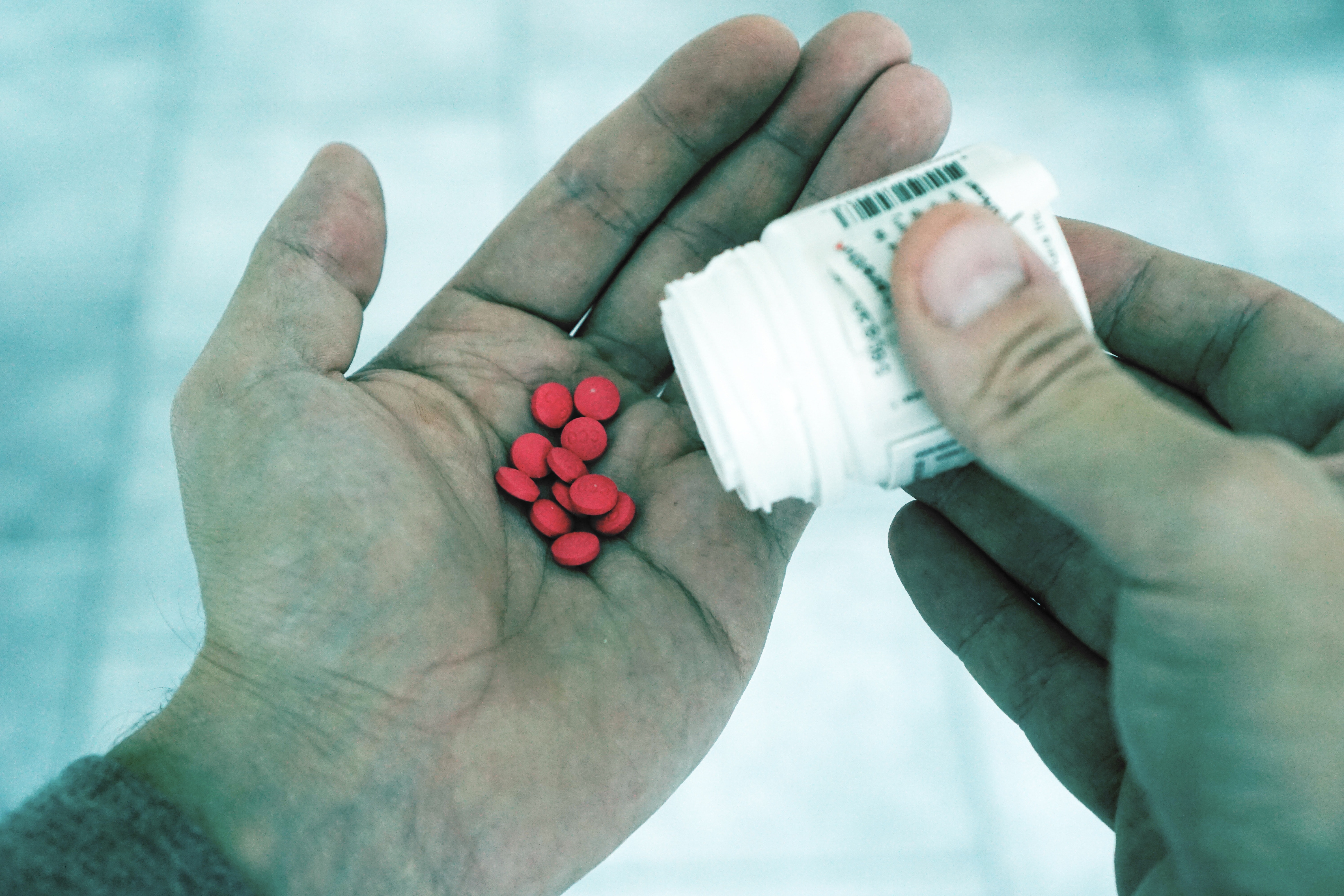
Prescription drug abuse means using medications prescribed by a doctor or other medical professional in a way they did not intend them to be used. Prescription drug addiction nearly always follows the problematic use or abuse of prescription drugs, and this kind of abuse may include anything from taking a prescription painkiller you got from a friend to treat a headache or pain from an injury to injecting or snorting ground-up pain pills to get high. Prescription drug abuse can quickly turn into compulsive, ongoing, destructive behavior, in spite of a range of serious negative consequences.
A growing problem in our country, prescription drug abuse impacts people of any gender, race, class, background, religion, and age—although it is more common among young people. Anti-anxiety medications such as Xanax, opioid painkillers such as OxyContin, sedatives such as Seconal or Amytal, and stimulants such as Adderall are the prescription drugs that people abuse most often, although any kind of unintended use of prescription drugs counts.
Prescription drug addiction is an increasingly serious problem in our country because many people don’t take the abuse of prescription drugs as seriously as they should. Prescription drug abuse can lead to serious health consequences and addiction if left untreated. If you or someone you love is misusing prescription drugs, a prescription drug rehab can help you break your addiction and regain control over your life.
Early detection of prescription drug abuse and addiction allows everyone involved a better chance at early intervention. This can prevent more serious problems down the line, and make it easier to overcome an addiction. The first step is knowing the signs of prescription drug addiction so that you can get the help you need.
Top Signs of Prescription Drug Addiction
Know the top signs of prescription to ensure you can intervene quickly before too much damage has occurred:
- Continued use of the drug, even after the pain it was prescribed for has ceased.
- Complaining about vague symptoms to get more medication.
- Lack of interest in treatment options other than medications.
- Mood and behavior changes, such as becoming hostile, volatile, agitated or anxious.
- Secretive or deceitful behavior in order to obtain the drug, such as stealing prescriptions, forging them, “losing” them, having multiple prescriptions from more than one doctor or buying and selling them on the street.
- Using prescription pills prescribed for others.
- Physical withdrawal symptoms when doses are missed. Flu-like symptoms such as joint and muscle aches, night sweats and insomnia are very common. In fact, any major increases and decreases in sleep are signs of prescription drug addiction.
- Acting extremely hyper or revved up, or acting sedated and stuporous.
- Using more than the recommended amount of medication.
- Developing a high tolerance so that more pills are needed for the same desired effect.
- Withdrawal from friends, family and society, especially if people close to say you have a problem.
- Financial problems associated with having to purchase more and more pills.
- Past history of drug addiction.
- Poor decision making in general.
Prescription Drug Addiction Phases
If you or someone you love is addicted to prescription drugs, understanding the stages of drug addiction can help you determine if addiction treatment is necessary. To help you recognize the signs of each stage, here are the four phases of prescription drug addiction.
Prescription Drug Addiction Phase I: Non-medical Use
Non-medical use of prescription drugs is the first sign that someone is on the road to addiction. People who do not have a prescription for painkillers may experiment with them as a way to “have fun” or to help them cope with a problem. Sometimes this experimentation can occur without any desire to continue using the drug. For some people, however, non-medical experimentation can become a problem and move into the second stage of prescription drug addiction.
For people who do have medical prescription, non-medical use includes taking your prescription more often than prescribed, taking pills not prescribed to you, or taking more than the recommended dose. When a person starts taking their prescription non-medically, it’s usually a sign that they’re taking their painkillers to get high, as opposed to treating the pain. This is a strong indicator that a person is about to spiral into addiction.
Prescription Drug Addiction Phase II: Misuse
Misusing prescription drugs is similar to non-medical use, but it’s done at a chronic level. In other words, if you’ve taken more than the recommended dose a couple of times, this is considered non-medical use. But if you find yourself regularly misusing prescription drugs, then you’ve slipped into the second phase of prescription drug addiction. This is a crucial phase in addiction because it is where a person’s tolerance is built up, which means they will have to keep increasing the dosage amount in order to keep experiencing the same pain relief or type of high. Tolerance is the gateway into dependence and addiction. Opiate painkillers such as Vicodin, OxyContin, Percocet, Fentanyl and others are especially prone to dependence and addiction if misused beyond their recommended doses.
Prescription Drug Addiction Phase III: Abuse
Chronic misuse of prescription drugs is a clear sign of drug abuse. Other signs of prescription drug abuse are relationship problems, missed work and problems meeting other responsibilities. This is the stage where the warning signs of addiction begin to appear: craving, preoccupation with the drug, and symptoms of depression, irritability and fatigue if the drug is not used. These symptoms of withdrawal are an indication that a person has become physically dependent on the prescription painkiller.
Prescription Drug Addiction Phase IV: Addiction
Physical dependence can quickly spiral into psychological dependence, which means a person has entered the final stage of prescription drug addiction. Physical dependence refers to the withdrawal symptoms a person will feel if the drug is not used. Psychological dependence refers to the compulsive need to keep using the drug, despite severe negative consequences to your relationships, physical and mental health, personal finances, job and criminal record. Other signs of psychological dependence are cravings, obsessing over obtaining the drug, and timing doses so you never come down. This often leads to trying to get more pills from your doctor, doctor shopping in order to get more prescriptions of the same drug, and even buying illegal pills off the street.
Prescription Drug Addiction Treatment
Sometimes the first step is simply talking with your doctor or some other professional that understands addiction. Talking to someone about a problem with prescription drug use can feel humiliating or dangerous, but remember, nothing is more dangerous than losing everything that matters to you or risking your life. Medical and addiction recovery professionals are trained specifically to offer help to people with the medical problem that is an addiction, not to judge people. It’s so much easier to tackle addiction early before it gets worse and leads to long-term trouble that’s harder to recover from.
If you or someone you love exhibits any of these signs of prescription drug addiction, residential treatment at Casa Palmera can put you or your loved one on the road to recovery. Our prescription drug addiction treatment program provides a structured environment that’s free of temptations and distractions and provides round-the-clock care and support to help the individual focus on recovery. Our caring, highly skilled staff will provide supervised detoxification from the prescription drug’s harmful toxins, individual and group therapy to learn new behavior skills, and holistic therapies such as yoga, meditation and other therapies to heal the spirit and mind as well as the body.
At Casa Palmera, we also offer chronic pain management to help you control pain without the use of prescription drugs. The Casa Palmera Chronic Pain Program is led by physicians who specialize in treating patients who are compromised by pain and have a history of prescription drug abuse. Our program includes holistic therapies such as neurofeedback/biofeedback, stress reduction, yoga, laser therapy, physical therapy, cognitive behavioral therapy, and more to reduce pain without medication.
Don’t let prescription drug abuse and chronic pain define who you are any longer. Get the help you need and deserve at a quality prescription drug addiction rehab.
Related Content:




